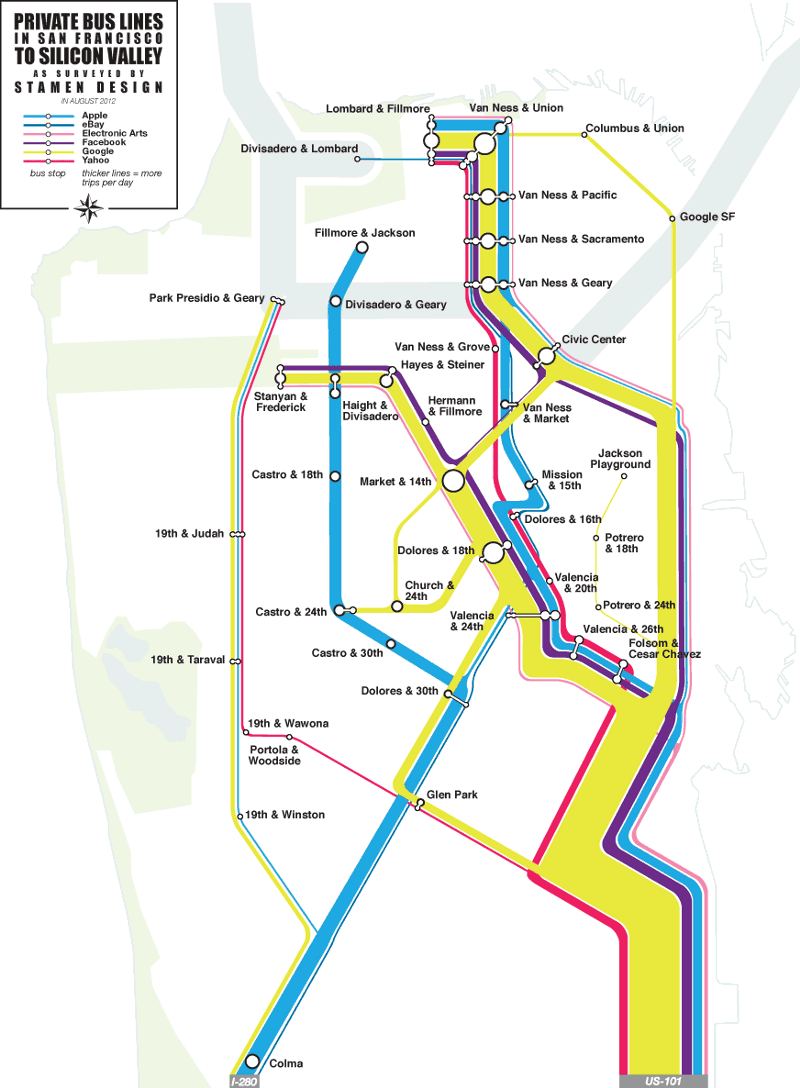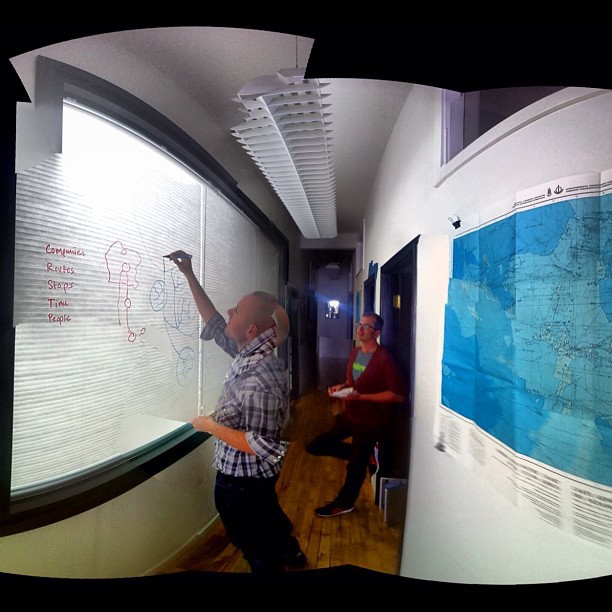A new installment in our continuing study of Bay Area infrastructure is live, at https://stamen.com/zero1. Some early coverage of the project here and here.
We’ve mapped the Bay Area’s crime and taxis before, but in each case a source of data was readily available for the taking. In this case, we decided to try something different: going out into the world and gathering the data ourselves. We hired bicycle messengers and others to follow the various buses that ferry tech workers from their homes in San Francisco to their campuses down in the Valley (an arrangement that inspires mixed feelings among city dwellers) and to count the people getting on and off them. We started with the locations for bus stops available on public sites like Foursquare, and used Field Papers, an open source paper/mapping projectdeveloped earlier this year with Caerus Associates, for the physical mapping.
The context of the Biennial, whose theme is “Seeking Silicon Valley,” seemed like a good chance to address the question of how the relationship between the Valley and its surroundings is evolving. This latest cycle of tech investment is spread out more broadly than the last one, leading some people to the conclusion that “…the distinction between Silicon Valley and San Francisco has all but disappeared. It is us, and we are it.” I think the relationship is more complicated and dynamic than that (and I’ve been thinking about this for some timenow); my hope for this piece is that it serves as an object to think with about the relationship between these quite different kinds of urban spaces and how we want to see that develop.
The exhibition is up until December 8 at the Zero1 Garage in downtown San Jose, and we’ll be hosting and participating in some events around it in the coming weeks. Stay tuned!
Fundamental shifts are underway in the relationship between San Francisco and Silicon Valley.
Historically, workers have lived in residential suburbs while commuting to work in the city. For Silicon Valley, however, the situation is reversed: many of the largest technology companies are based in suburbs, but look to recruit younger knowledge workers who are more likely to dwell in the city.
An alternate transportation network of private buses — fully equipped with wifi — thus threads daily through San Francisco, picking up workers at unmarked bus stops (though many coexist in digital space), carrying them southward via the commuter lanes of the 101 and 280 freeways, and eventually delivers them to their campuses.
What does this flow tell us about Silicon Valley, and the City it feeds?


